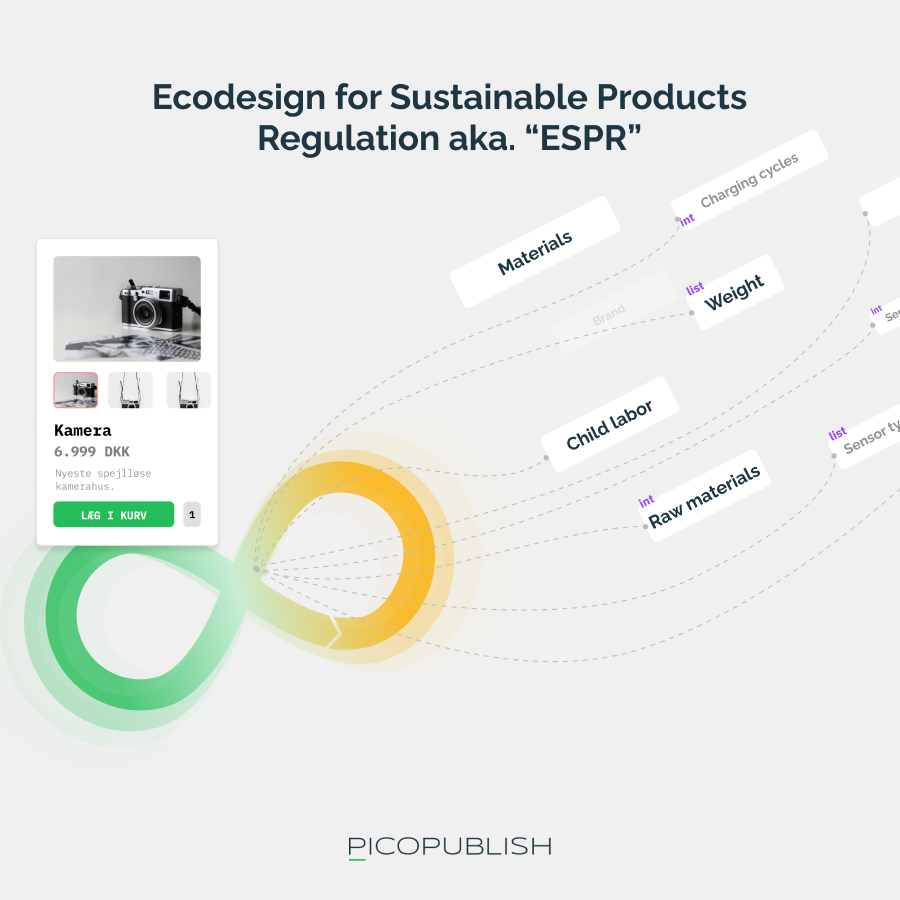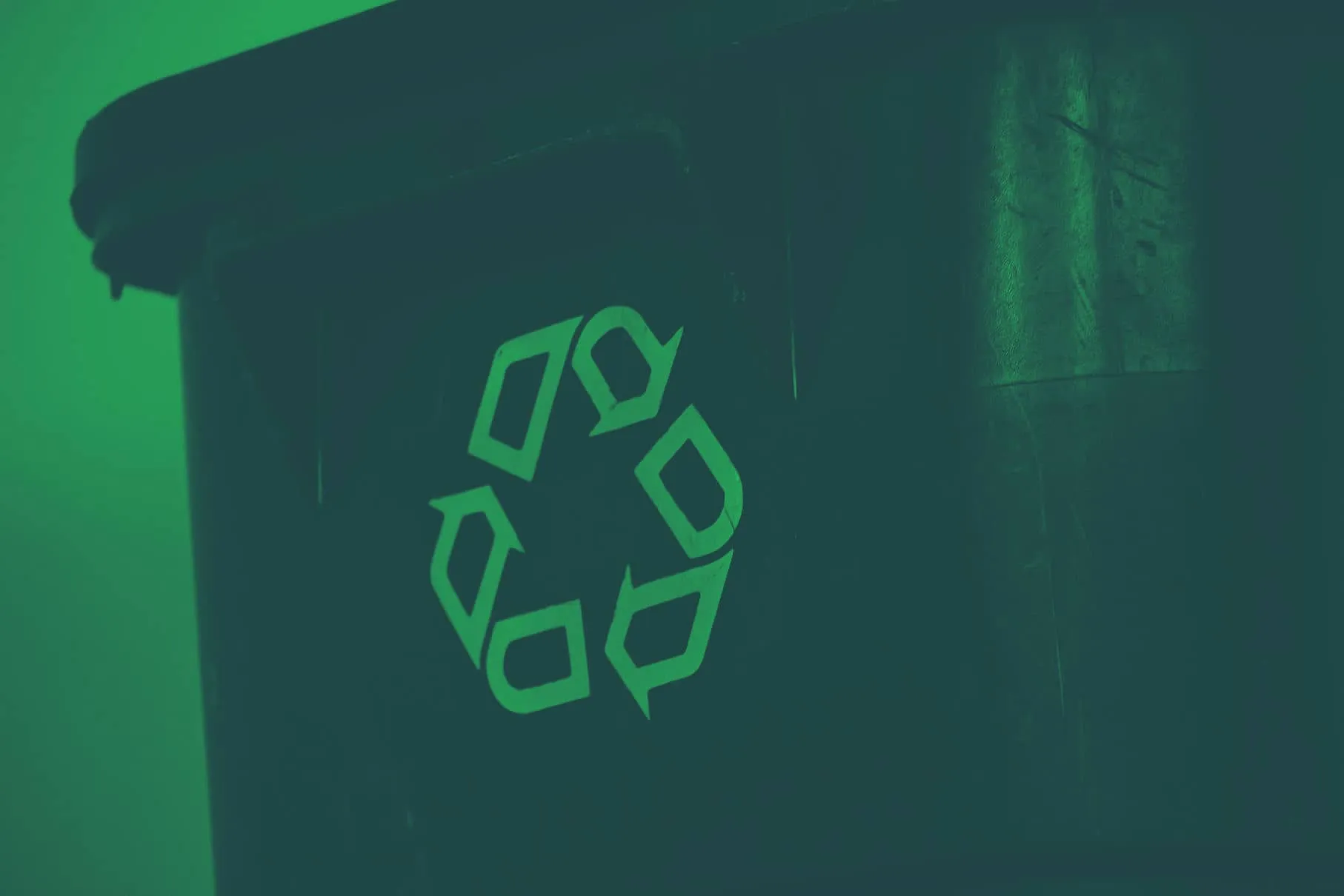What is DPP - the digital product passport from the EU?
Just like the passport we know, the digital product passport is a document that must follow the product throughout its life cycle.
The passport's function is to be the primary source of information about the product's sustainability profile, including data related to:
- Durability: Think data about materials, certifications etc.
- Reusability: Think data about reusability, degradation rate, durability etc.
- Upgradability & repairability: Think data about standardized measures/units, R2R (assembly instructions, etc.)
- Hostile substances: Think data about chemicals, manufacturing processes, etc.
- Energy and resource efficiency: Think data about production, transport, functionality etc.
- Recycled content: Think data about sorting (e.g. Danish fraction labels), recycling etc.
- Carbon footprint: Think logistics/value chain - relates, for example, to the CSRD reporting
The digital product passport was born in and by the EU, and is currently still a theoretical construction that needs to mature, including through a number of "call for proposals", where the passport's format and scope of documentation must be clarified (as of June 1, 2024, the ESPR directive has been approved by the EU Commission).
In 2022, an EU committee published the document "On making sustainable products the norm", in which the digital product passport is described:
"Digital product passports will be the norm for all products regulated under the ESPR, enabling products to be tagged, identified and linked to data relevant to their circularity and sustainability [...] Depending on the product concerned, this can include information on energy use, recycled content, presence of substances of concern, durability, reparability, including a reparability score, spare part availability and recyclability.\" (Source; Europa.eu).” (Kilde; Europa.eu)

Who is covered by the realization of the digital product passport?
Although the digital product passport is an EU regulation, the initiative will presumably affect actors throughout the value chain worldwide.
In the current interpretation of the DPP concept, it is reasonable to imagine that a global electronics manufacturer headquartered in North America, which produces laptops in Asia, and sells them in Europe, will have to meet the requirements formulated in the DPP regulation in order to sell its products in the EU.
A digital product passport will create added value for affected companies
Regardless of where the product is manufactured or where the manufacturer is located, the digital product passport will thus have an impact on global trade - and not just on key players in Europe.
A study from the United States shows that American consumers are the most willing to pay more for environmentally friendly/sustainable products and services (Source: Kezzler.com).
Therefore, American companies may also see a new regulation as an opportunity to strengthen their brand in the North American markets, and not just as (yet) a compliance requirement that is expensive, but which does not create value for the core business.
The EU itself emphasizes that concepts such as the Digital Product Passport must benefit end users - whether this will be the case, time will tell.
Want to talk data?
If you’re interested in hearing our ideas on how data can help your business execute, grow, and scale, we’re ready for a no-obligation conversation.

Which industries are hit by DPP requirements first?
In the long term, the DPP regulation will affect a wide range of industries/product categories. The DPP will reportedly be rolled out gradually from sector to sector, so that knowledge and learning can be continuously gathered about how the regulation is best handled and enforced.
Batteries - specifically industrial and electric car batteries - are planned to be the first area where DPP regulation will come into force. Although the DPP will only hit these product categories from 2026, industry associations are already taking the necessary steps to ensure compliance, and the first proof of concept was unveiled at this year's Economic Forum in Davos (Source: Umicore.com).
Shortly thereafter, the electronics and textile industry is expected to follow suit. Here is an overview of the most eye-catching deadlines announced to date:
| Category | Expected Deadline | Expected regulation |
|---|---|---|
|
Batteries |
2026 |
|
|
Textiles |
2027-2028 |
|
|
Electronics |
2027-2028 |
|
|
Building materials |
Unknown |

How should European companies deal with the DPP?
If the DPP is successful in its current form, there can be no doubt that it will have a significant effect on a large number of manufacturers.
Complex products have complex supply chains, and for years the links between the actors in these chains have often been unclear. When additional requirements for comprehensive reporting are imposed, there is a risk that some companies and industries will be disproportionately affected - and this can be distorting competition.
Major demands on the affected companies
The DPP is likely to mark the beginning of the end of an era in which the responsibility for enriching product data is fragmented and lacking. In other words, companies will no longer be able to operate without having a deep understanding of the design, production, use, and recycling phases of their products.
At the same time, this means that many companies will have to rethink their business model, especially their handling of contracts with partners, when the responsibility for enrichment is to be distributed. Although directives such as the CSRD initially only affect companies with 500+ employees, our expectation is that the small companies will have to provide much of the data that the larger companies have to report.
According to the EU, companies that succeed in formulating and implementing new business and collaboration models that meet the requirements of the DPP will be able to strengthen their brand with a sharper green profile.
Follow the development - or call your consultant!
At PicoPublish, we continuously follow the development of the Digital Product Passport.
Most of our customers have a PIM system, and are therefore in an ideal position to take a practical approach to collecting, organizing and displaying DPP data.
Useful links for the curious:
- https://hadea.ec.europa.eu/calls-proposals/digital-product-passport_en
- https://www.inriver.com/resources/digital-product-passport/
- https://www.inriver.com/resources/digital-product-passport-ebook/
- https://en.gs1.dk/digitale-produktpas
- https://www.ds.dk/media/fbmagrdm/introduction-digital-product-pasport-9-november-2022.pdf



